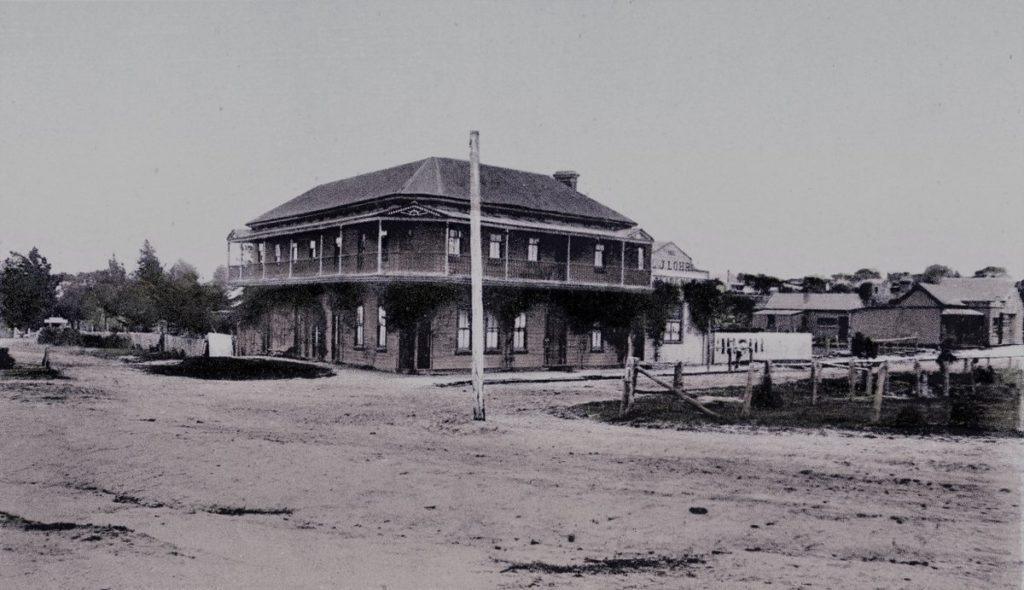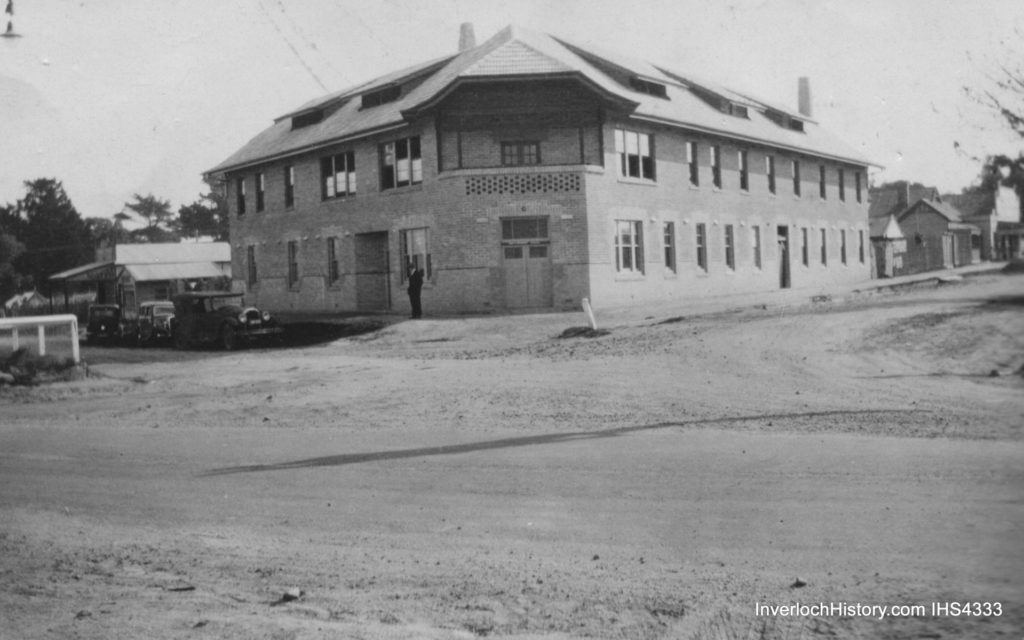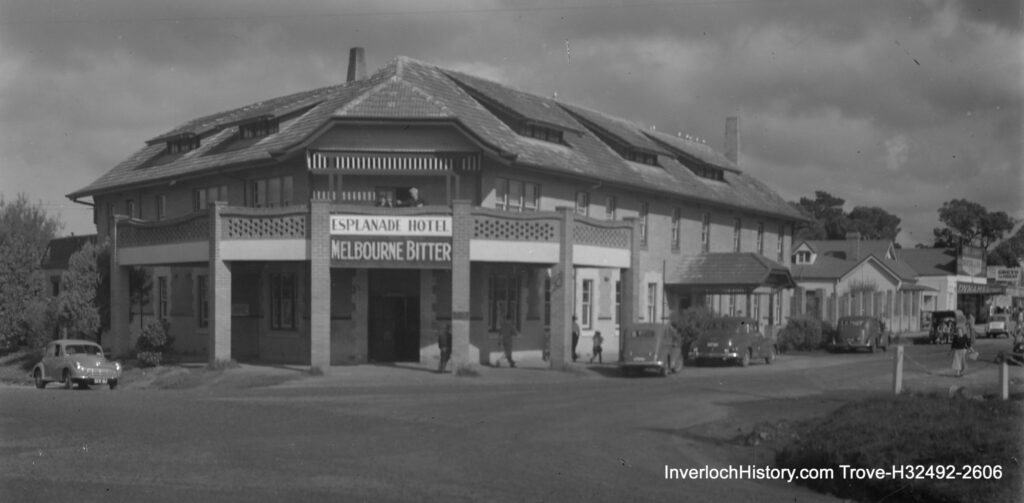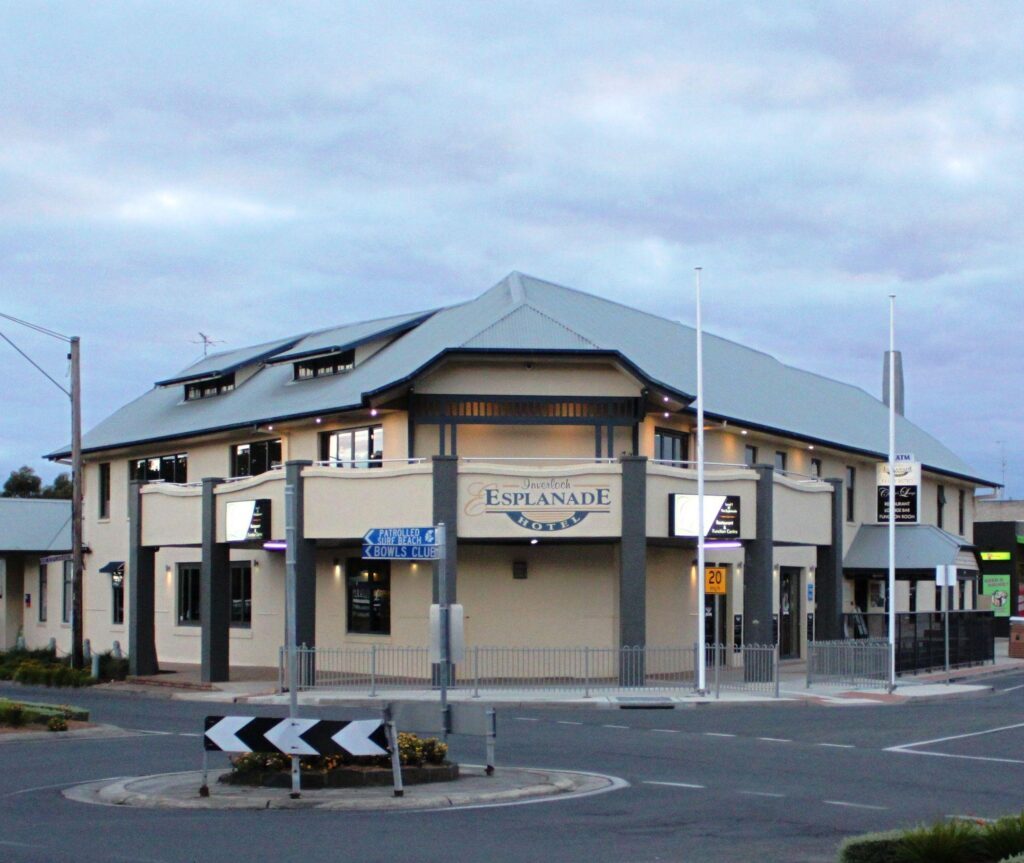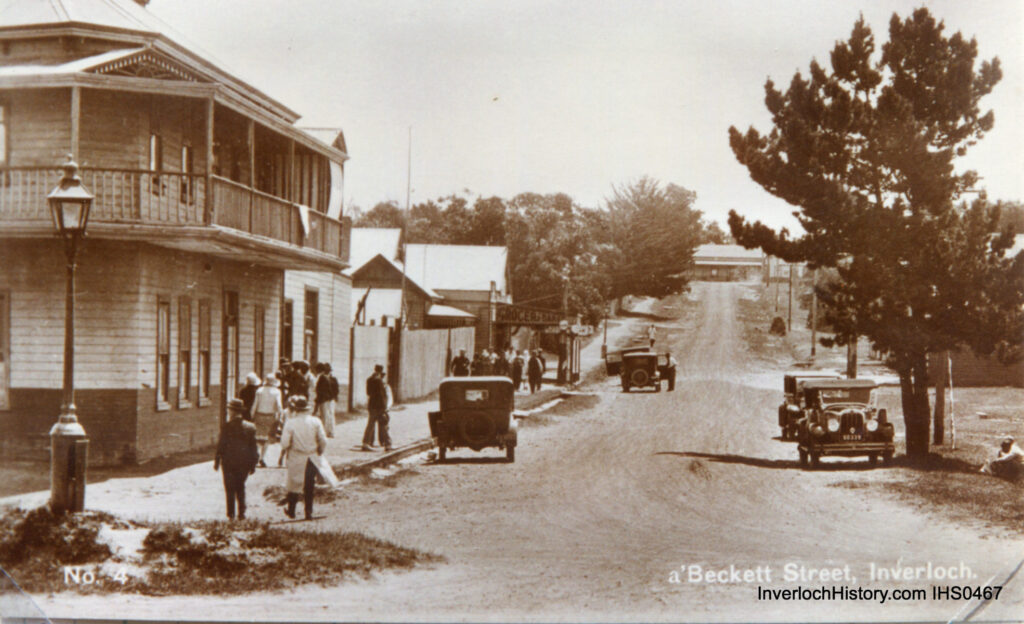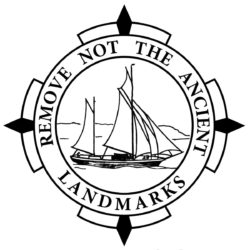A summary of important dates and activities during the 19th & 20th Centuries.
Originally called ANDERSON INLET, Inverloch was proclaimed a town on the 8th. February 1886 by the Governor of Victoria – Sir Henry Brougham Loch.
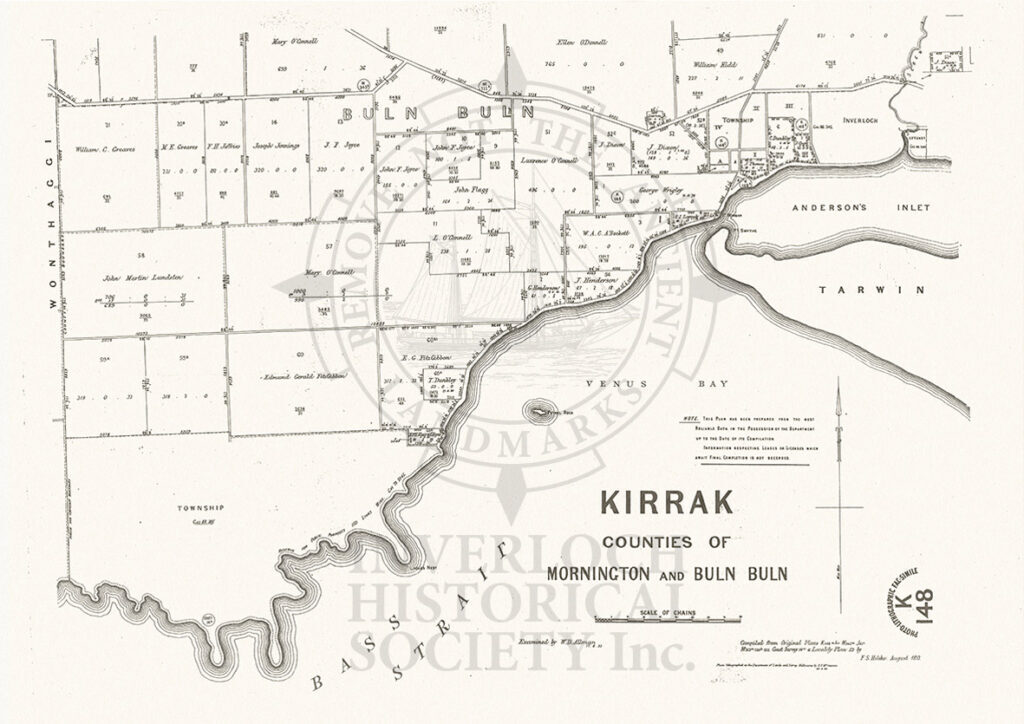
The central township of Inverloch situated at the shallow entrance to Anderson Inlet, in the Parish of Kirrak, in the Counties of Mornington and Buln Buln.
It shows how much the coastline has changed especially around Point Smythe over the years.
It is believed that the origin of the name Inverloch is Scottish, for there were many settlers from Scotland living and settling in the area at the time. Loch means ‘lake’ whilst Inver is a Gaelic word meaning ‘at the entrance’.
The Koo-We-Rup swamp was almost impassable in Victorian times, restricting any road or rail development. The Strzlecki mountain range also offered great difficulties into entering the coastal region of South Gippsland, hence the great use of coastal shipping.
Land development and use began well before the proclamation of Inverloch as a town. By 1869 George Black owned or rented huge areas of land from what is now the township of Bass right down to Cape Liptrap, and into the Strzlecki Ranges. In 1874 the first land purchased in Inverloch was sold to George Wrigley. It covered a large area ranging from Ullathornes Road to A’Beckett Street and down to Toorak Road.
1876 saw a “choice little pocket of 260 acres of rich flats in Pound Creek, with a frontage to
Anderson Inlet” sold to the Henderson brothers.

In 1880 the 31 tonne carrying capacity trading ketch RIPPLE was registered in Melbourne to trade to Anderson Inlet.
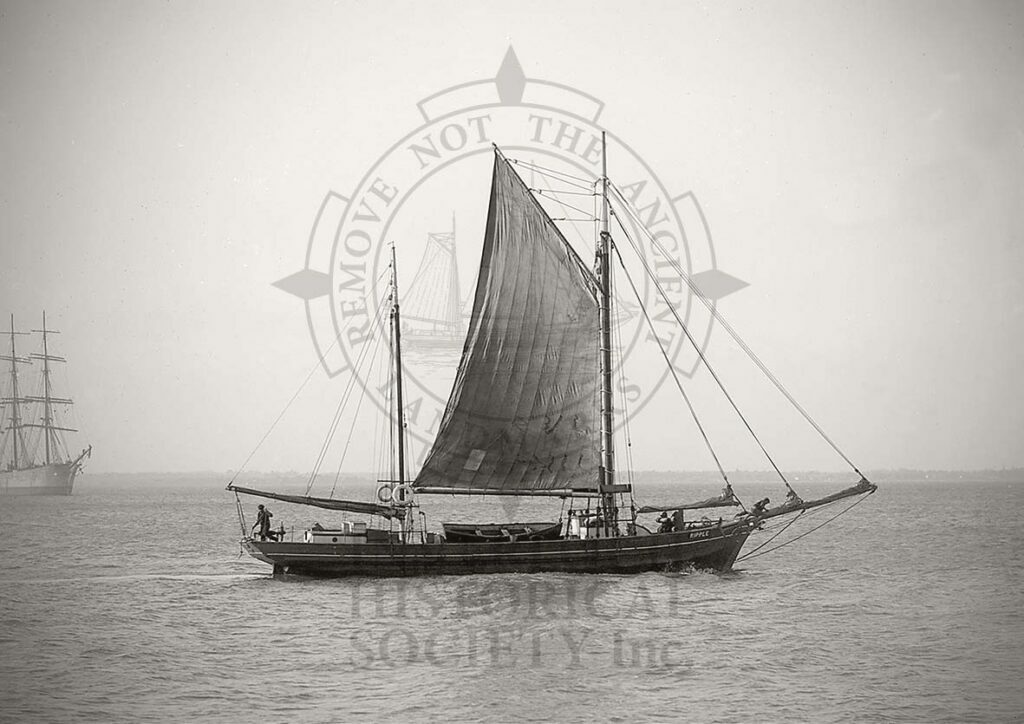
Built 1872 at Davistown, Brisbane Water, near Gosford NSW, by ship builder Benjamin Davis.
Plied between Inverloch and Melbourne from the 1800’s tom 1929
In September 1883 the Anderson Inlet Post Office was opened. The mail was brought by ship and also carried on pack-horse from Mirboo North.
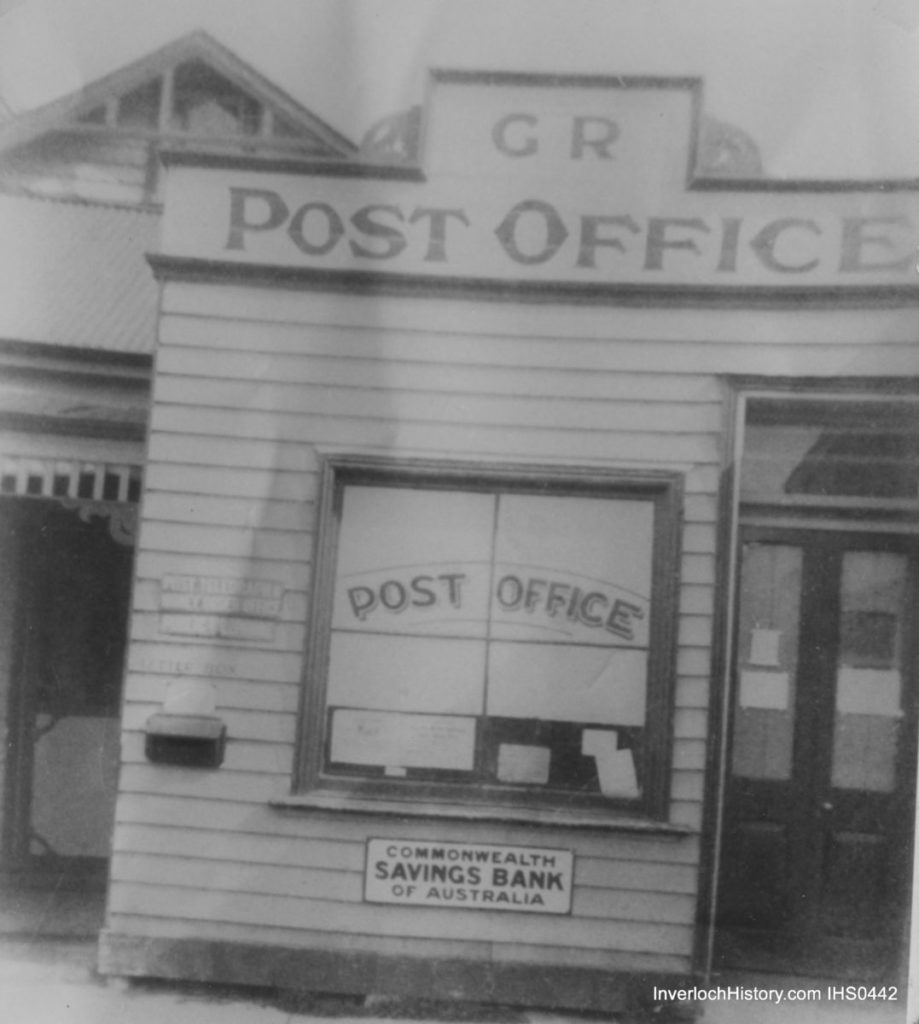
1886 Anderson Inlet school classes began in a Mr. Laycock’s building near the corner of Alma and Scarborough Streets. The teacher was shared with the Pound Creek School.
1887 saw materials for the building of the Great Southern Railway delivered to Maher’s Landing, which was then hauled by bullock wagons to Leongatha and Koonwarra, ready to build the line to Foster and Yarram.
In 1888 the Anderson Inlet Cemetery was established when four hectares were reserved by the Lands Department. The first interment was in 1891.
On the 1st. December 1889 Anderson Inlet was renamed INVERLOCH.
The township of Inverloch was transferred from the Shire of Alberton to the Shire of Woorayl in 1890.
1897 saw the Inverloch Mechanics Institute and Library built by public fund raising.
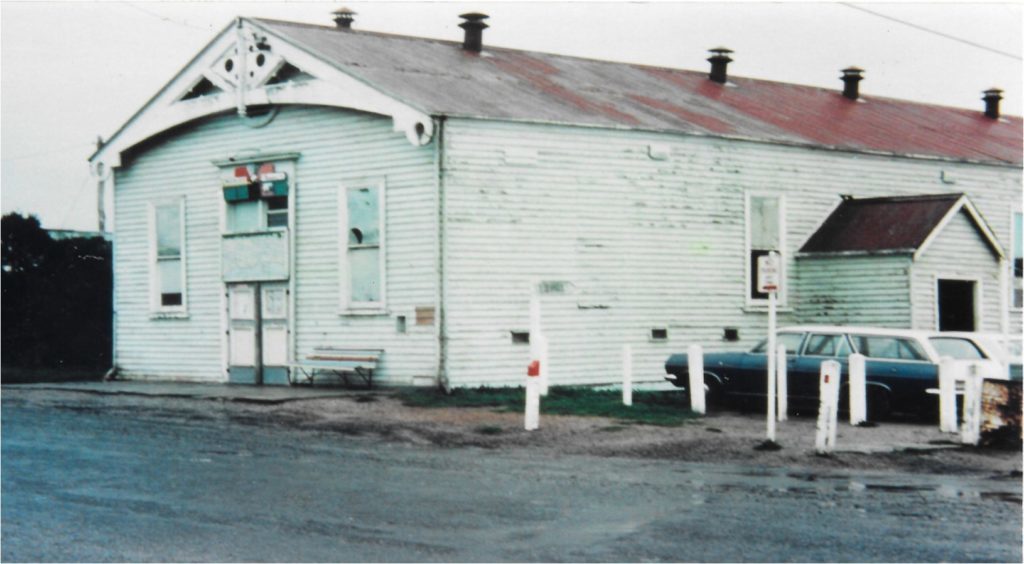
The start of the new century in 1900 saw a flurry of development for the town. A Racecourse was established at the northern end of Cuttriss St. The first meeting attracted 500 people and was followed by a Grand Ball at the Inverloch Esplanade Hotel. A Rifle Range was also established across Screw Creek to Townsend Bluff, seen as an essential activity, with the South African Boer War not going as wished.
Street lighting was introduced with gas lamps at the jetty, between there and the Esplanade Hotel, and another at the top of A’Beckett St outside Neil’s Hotel.
The property known as ‘The Cliffs’ on the Bunurong Road just past the RACV, was built for Mr. E.G.Fitzgibbon. the Town Clerk of Melbourne. It is still there!
A Mr. W.H. Ferguson discovered two fossilized dinosaur bones at Eagles Nest.
The Inverloch Rocket Brigade started regular practices with their rescue equipment, fired out to a ship in distress. No ship or boat ever required the Victorian equipment to save a life. The Rocket Shed on the Esplanade, sitting behind the recreation of the Ripple boat is still in outstanding condition, complete with a model of the old equipment, plus diagrams of how it all worked.
In 1902 permission was received to erect beach bathing boxes at the foot of Abbott St.
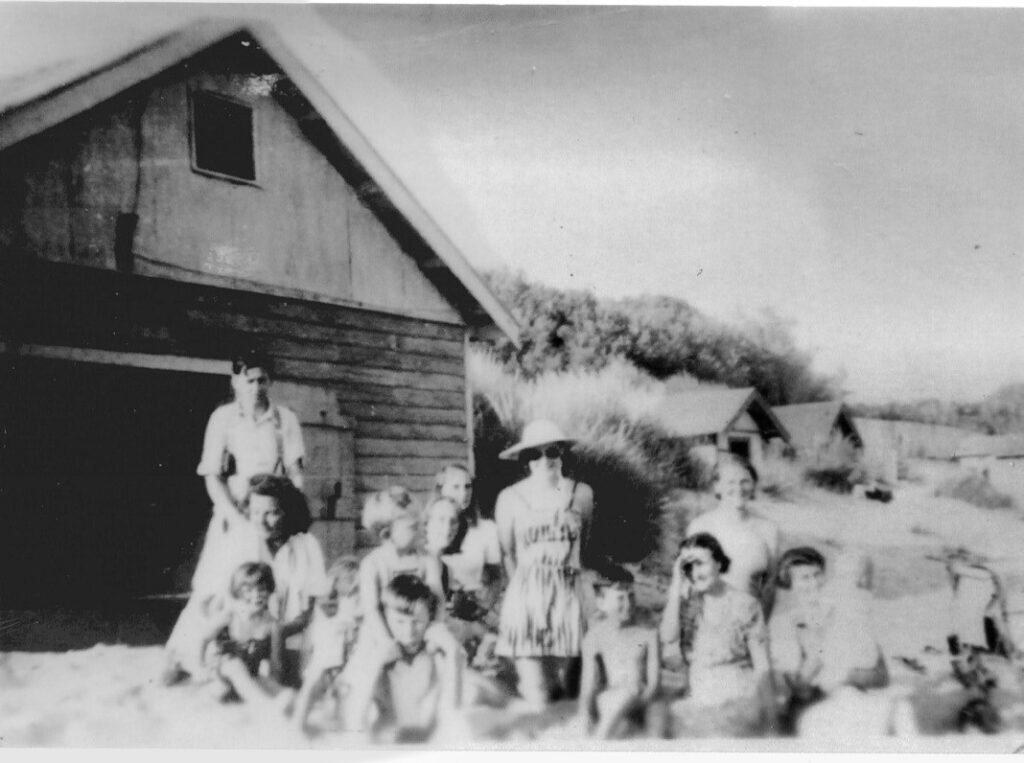
February 1906 saw the original wooden Catholic Church opened and blessed by Dean Coyne.
1908 brought Inverloch better communication when telephone lines were connected. 1908 also saw regular and reliable steamships providing a good service for the town – such names as Despatch, Wyalla, Moonah, Ellen and Manawatu became regular names to all citizens of the town.
In 1909 Wonthaggi was founded with the opening of the State Government Coal Mine. On 29th. November the first load of coal arrived at Inverloch. The local jetty was used to load ships with coal delivered by bullock wagons and steam traction engine.
February 1910 saw the railway line to Wonthaggi completed, so consequently the shipping of coal from Inverloch ceased.
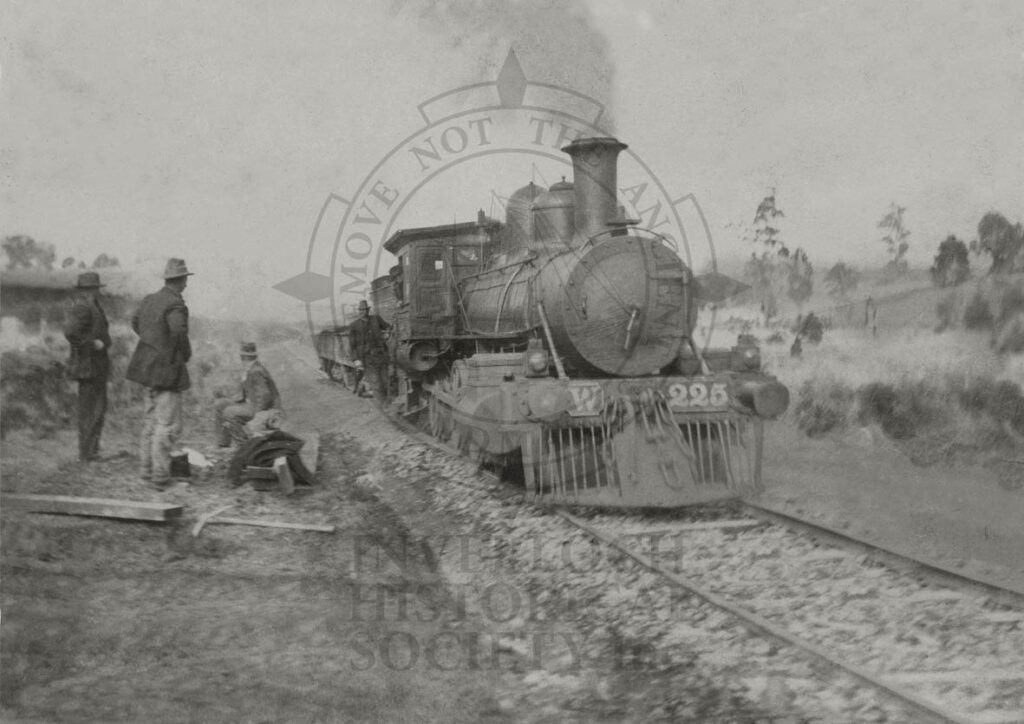
On April 8th 1914 the Inverloch State School was built on the current site in Bayview Avenue.
The Anglican Church was built on its present site in The Crescent in 1924, on land donated by Ellen Clerk in 1906.Previously services had been held in the Mechanics Institute in A’Beckett Street.
The Methodist Church purchased the original North Wonthaggi Methodist Church and erected it on land they owned. Opened for worship in 1930, they then purchased the Jumbunna Methodist Church to the front and the old church became their hall.
1930 was a significant year in Inverloch’s development in the midst of the great world Depression. Local man Calvert Wyeth (Cal as he became known popularly) decided to spend money building a holiday resort for basically the wealthy visitors. He used his own design based on an American model called the ‘LODGE’ style. Using local labour to build and run it, Pine Lodge generated work in Inverloch. It included a fine dining room, generated its own electricity, recycled water, had en-suite rooms, septic toilets and an Olympic size salt water swimming pool.
In 1931 Inverloch school children collected beach stones to build the 1914-1918 War Memorial on the corner of Reilly St. and Bayview Avenue.
1934 saw the destruction of the Esplanade Hotel by fire. Its gas lighting, including the street light outside the hotel were replaced with electrical components. Alfred Frongerud rebuilt the hotel with cement bricks made with Wonthaggi coal fields crushed red stone.
1934 also saw the Tarwin River flood the worst in memory. It forced authorities to remove much snagging and to build levee banks.300mm of rain fell in 48 hours in December. Bullocks drowned, and the beach was littered with carcases of dead sheep and cattle. Water flooded Hopetoun St, leaving heaps of dead fish and birds.
1936 saw a nine hole golf course opened half a kilometre from the town centre in the vicinity of what is now Golf and Club streets.
1936 also saw Arnold Soderman hanged at Pentridge for the murders of June Rushmer (Leongatha), Ethel Belshaw (Inverloch), plus two others.
1940 saw the tragic death of the Frongerud family, owners of the Esplanade Hotel. Their launch sank whilst attempting to cross the bar into Anderson Inlet. They ignored warnings of heavy seas by San Remo fishermen.
1939-1945 during the Second World War, Pine Lodge was used as a Naval Hospital. Red Cross branches supplied nursing Aides. The building was badly looked after and not returned to Cal Wyeth as was originally agreed. Building material shortages hindered the work to revitalize the buildings.
In 1946 the Inverloch Fire Brigade was officially registered with the Country Fire Authority, and in 1947 the Inverloch Water Trust was formed.
1953 saw the first Fire Station built in A’Beckett St. The Post Office opened for business with a telephone trunk line enchange window to pay for the trunk calls.
In 1955 the Inverloch Presbyterian Church bought the old Outtrim Presbyterian Church for $800 and moved it to William Street. This is now the Uniting Church in Inverloch.
In 1959 the Angling Club was formed, and Inverloch’s first chemist shop at 13 A’Beckett St. opened.
1960 saw the opening of the National Bank, whilst on the shoreline the Inverloch Bowling Club was formed.
1967 – the Shire of Woorayl built a new toilet block and rooms, which included space for the Jack Lewis Shell Trust Museum, plus room for the South Gippsland Conservation Society.
1973 saw the local Water Board purchase 104 hectares of land west of the town for land sewerage disposal. Sewerage was connected in 1979.
In 1974 Meals-on-Wheels was inaugurated. The Woorayl Shire Library took over the Mechanics Institute Free Library.
1977 saw the Methodist and Presbyterian Churches combining to become the Uniting Church of Australia.
1978 – the Wonthaggi railway line closed to all passenger and goods traffic. In Inverloch itself, fire destroyed the Mechanics Institute.
In 1983 a new Community Hall was opened, paid for by an additional rate charge on all local
properties. Over the years additions were made to the building which eventually became known as ‘The Hub’.
1985 saw the destruction of the Pine Lodge building by developers. This much loved and important architectural building was a great loss to the community and Gippsland. All that remains are the two brick pillars standing lonely in Ramsey Boulevard.
In 1987 Community Radio 3MFM was granted a full license to broadcast.
A much needed new Fire Station was opened in 1990 valued then at $350,000.
1995 saw numerous City and Shire boundaries altered in Victoria and consequently Inverloch was removed from the Shire of Woorayl and placed into the Bass Coast Shire Council.
Below: The Esplanade Hotel. Original timber building constructed 1896, destroyed by fire mid 1930’s, rebuilt using bricks from Wonthaggi.
